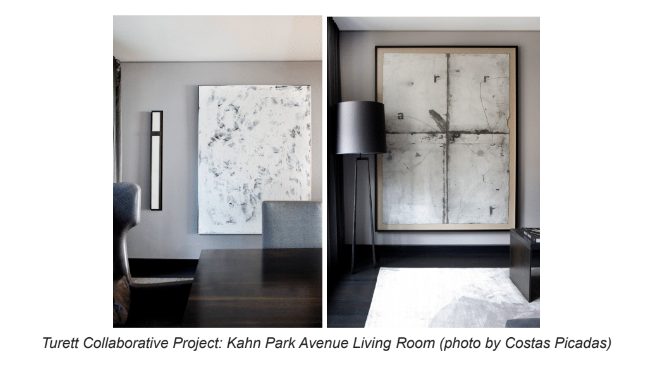1. Set your intentions and mood with color…Color affects our mood in a space dramatically, whether we realize it or not. The best thing about designing with color is that it surrounds personal style – sometimes, the effect of color design on mood is more subtle, while in other instances, it’s dramatic and nearly tangible. Surround yourself with your favorite colors, use bolder colors to enhance your mood and spark creativity, and more muted colors to create a calm, serene environment.
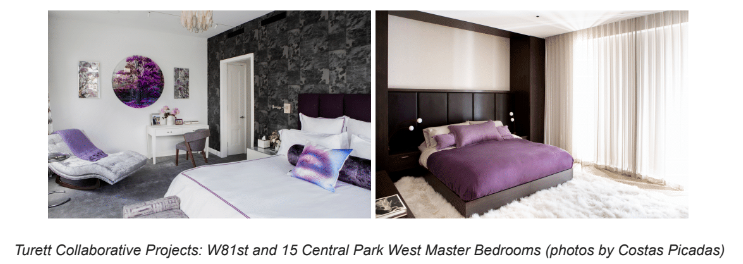
Color has been proven to affect mood – with bolder yellows linked to creative boosts, blue to intellect and logic, green to calm and equilibrium, and red to stimulation and energy. For example, a color historically associated with royalty, purple has a strong, commanding effect on a room. A tertiary color combining red and violet (a secondary color, mixing red and blue), this strong, rich combination of colors establishes a stimulating yet balanced environment. Drawing from the ‘stimulating effect of red’ and the ‘tonic effect of blue’ as described in Color Psychology & Color Therapy, purple is great for spaces such as guest or master bedrooms, simultaneously holding a more meditative, calm presence along with an energetic, sensual aura.
2. Study up on good vibes…It is fun to play around with color, but it can be a major commitment when designing with dramatic colors. Studies demonstrate that color has a profound energetic impact – it has been suggested that even blind individuals have been able to identify colors without the ability to physically see them. Having a basic understanding of vibration between colors, and how colors interact, is important when creating any composition in a room. Josef Albers has in-depth studies of color theory, such as his famous 1963 book ‘Interaction of Color,’ which is a great 101 for design and color lovers to reference. Take the color wheel into consideration – choose analogous colors for a harmonious, monochromatic look, complementary colors for a bold, balanced look, and triadic colors for a more energetic, personality-filled space. Different hues, tints, tones, and shades can also be used to create varying illusions or to draw attention to certain objects. See the use of complementary colors in Jessica’s loft below, as well as similar shades of blue in the Mitchell Lane Living Room design.
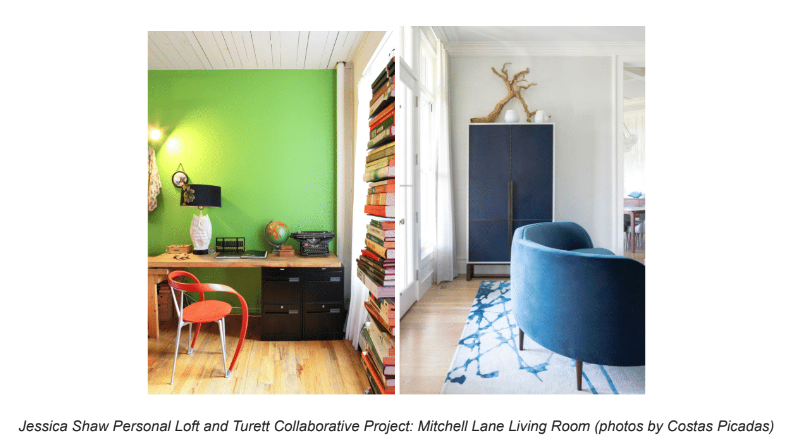
3. Go ahead, break the rules…That being said, don’t be afraid to break the rules. While there are valuable tips stemming from color theory, rules are made to be broken – sometimes, anything goes, and unexpected color combinations work well. Color is a personal preference, what works for you, might not work for others. Gauge how comfortable you are with a particular color, does it bring you joy or does it deplete your energy? Let your reaction to the color influence your design palette. From there, just let your creativity flow!
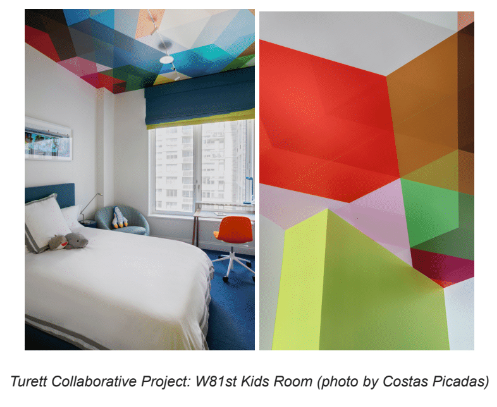
4. Stimulate your own creativity with art…Art is an incredibly personal aspect of your home. In a sense, it is a reflection and extension of yourself. Few other pieces in your living space can be so personalized, intricate and emotion-filled as artwork. Just as color has been proven to have calming or stimulating effects, art is more than just a painting on a wall – it has a powerful impact on your brain.
Research, such as a study from the American Association for the Advancement of Science: How Engaging With Art Affects the Human Brain, continues to indicate that making and viewing art keeps your brain stimulated and active, enhancing brain function and exercising creativity. By incorporating art pieces into your home that inspire you to engage in creative pursuits, you can simultaneously promote your own health and well-being. Harvard Health Publishing states that creative activities can relieve stress, aid communication, and even help arrest cognitive decline.
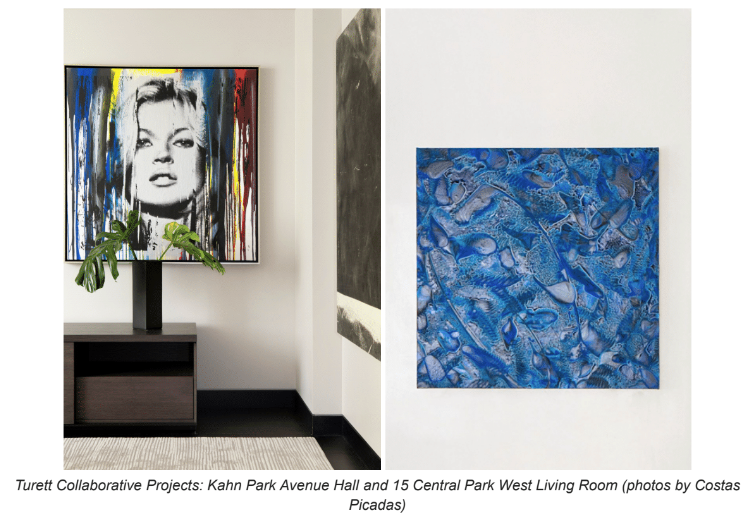
5. Use art as an emotional outlet and support…Not only that – we all know that sometimes, art can also uncover our emotions. We can look at a calming painting or a funky abstract piece in our home, and it has the power to increasingly enhance our enjoyment of a space. One day, that same piece of artwork may seem dark and mysterious, while another, it may seem lively and uplifting. It can hold a totally distinct aura, depending on your personal outlook and mood. These malleable effects of artwork add immense value to your space and can be enhanced by other factors such as lighting and color.

6. Let art tell YOUR story…When designing with art, identify what story you want to tell. One must take into account not only the vignette in which the art is hung, but also its relationship to the whole space. You want the art to go with the story you are telling. In this case, there is a shift of energy from the great room to the master suite, and another in the home office – each space has its own energy, whether quiet and subdued or loud and boisterous.
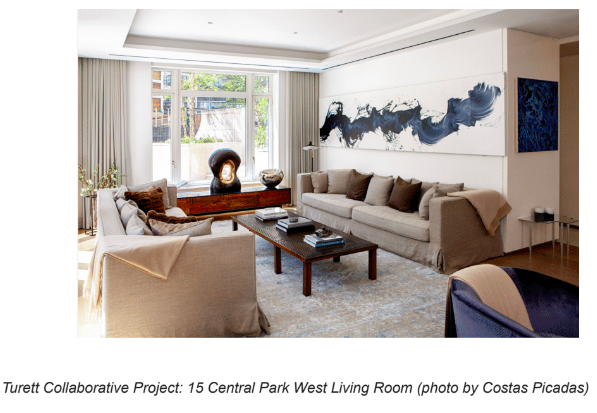
7. Create harmony in your surrounding space, but don’t be afraid of a little tension…Consider the surrounding environment. Make sure to take into account the finishes, forms, and colors of the room. When incorporating statement art pieces, this is especially necessary, in order to create a flattering landscape for each piece. Sometimes it is okay to put the piece in a place of tension if you want to give the interior a more dynamic and unique feeling.

8. Don’t forget logistics…A definite rule in designing around art is that the art should be at a comfortable eye-level height. For reference, use a measurement similar to the height that galleries go by, which is typically 57 to 60” from the floor (this can be altered a bit if you have especially high ceilings). This will allow individuals of varying heights to view the piece comfortably. Additionally, it’s important for the piece to be displayed in an area with natural light and with ample negative space for it to breathe.
